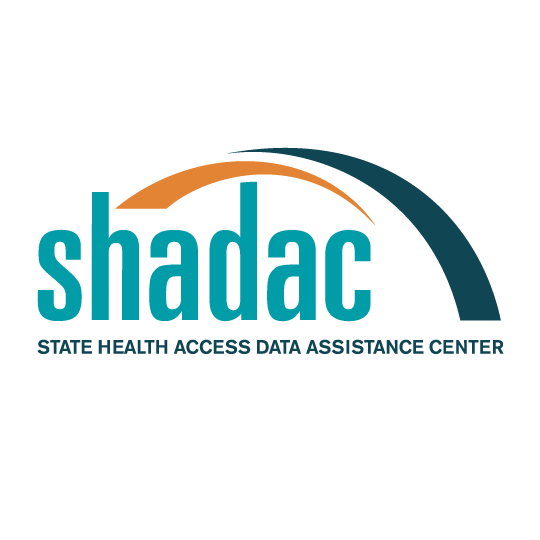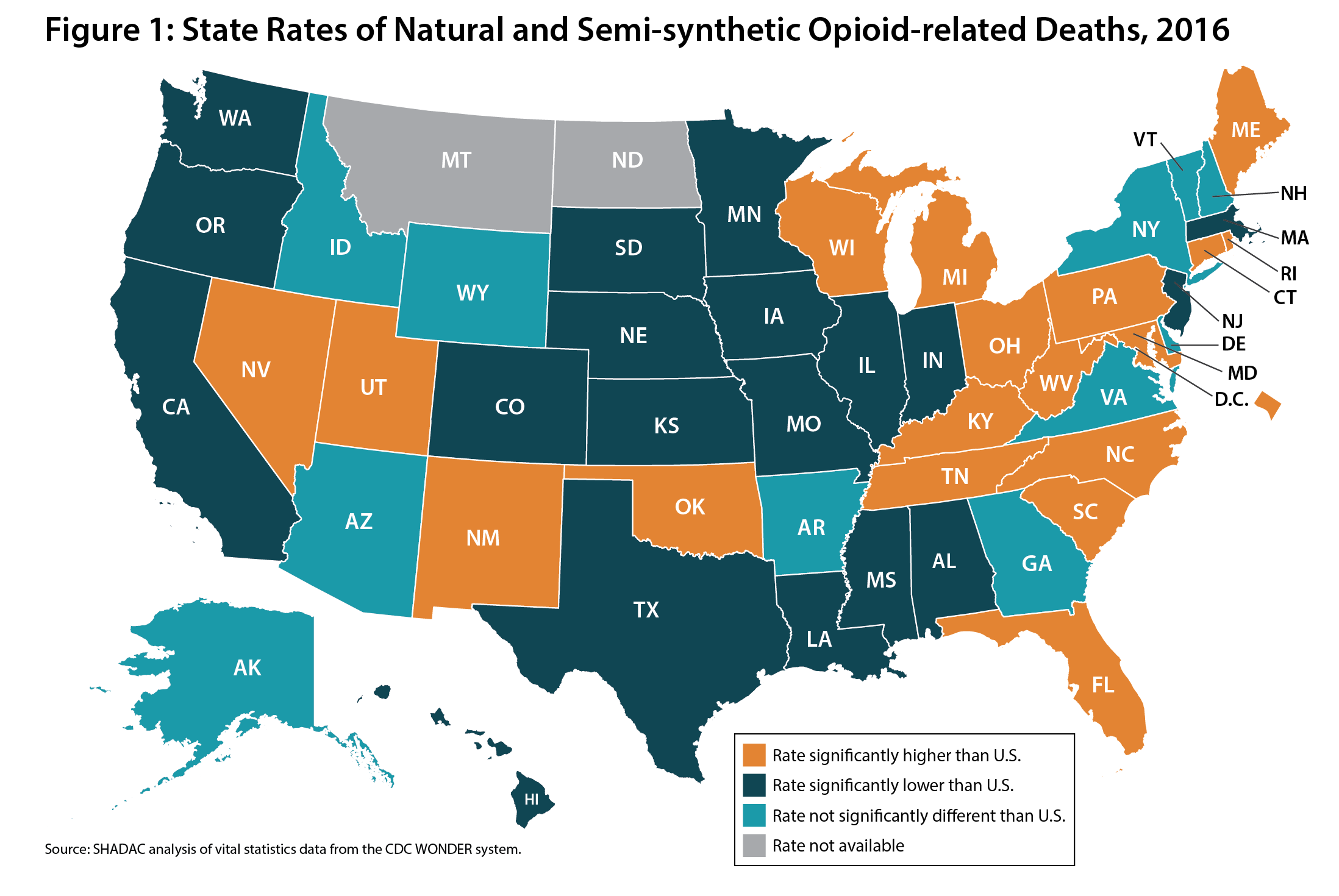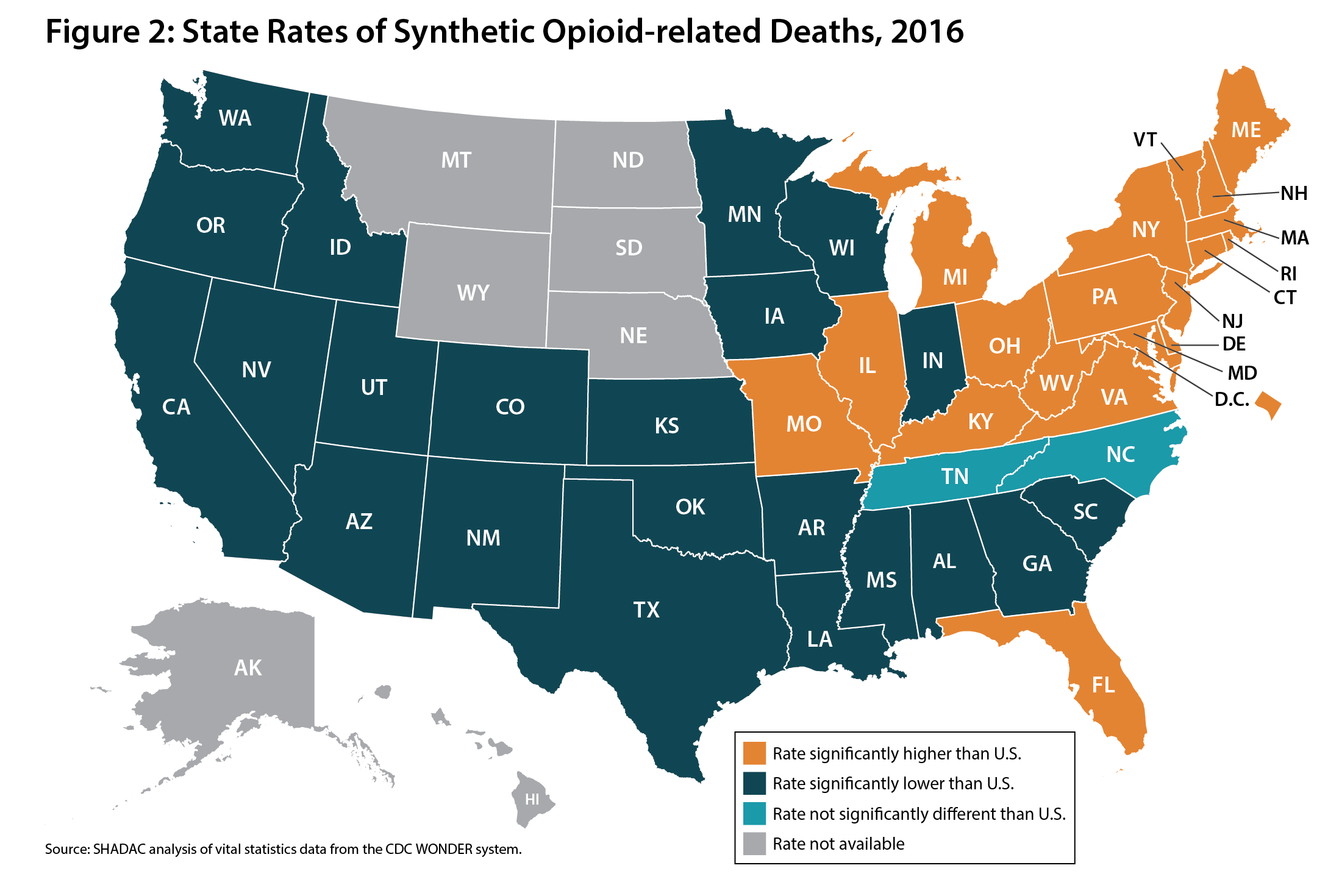Blog & News
The Changing Opioid Epidemic: State Trends, 2000-2016
August 9, 2018:In a recent blog post, we highlighted an issue brief examining the evolution of the opioid overdose crisis at the national level, finding dramatic increases in deaths from heroin and synthetic opioids within the past few years. This blog post focuses on a related issue brief on state trends in the opioid crisis.
Although opioid overdose deaths have measurably increased across the U.S., some states have been more severely affected by particularly high death rates. Additionally, as the national opioid crisis has evolved, some states have been especially hard-hit by the rise in deaths from heroin and synthetic opioids.
This blog post highlights a new SHADAC brief that uses vital statistics data from the CDC WONDER system to analyze differences in state opioid overdose deaths for different types of opioids (i.e., prescription painkillers, heroin, and synthetic opioids). This state-focused brief is a companion piece to a national brief that provides additional background on the problem of opioid overdoses.
Key Findings
Although national data on opioid overdose deaths show a shift in the past few years—from deaths related mainly to prescription painkillers earlier in the epidemic to mostly heroin and synthetic opioids in the past few years—state date illustrate a more-nuanced pattern.
Since 2000, most states have experienced statistically significant increases in death rates from prescription painkillers (Figure 1). And the states with relatively high rates of deaths from prescription painkillers represent geographically diverse areas of the country, including the 2016 highest rates in West Virginia, Utah, and Maine.
However, the shift in deaths to heroin and synthetic opioids has been more regionally concentrated in a contiguous block of states, primarily east of the Mississippi River and from Maine and Wisconsin in the north to Kentucky and Virginia in the south (Figure 2). The states with the highest 2016 rates of heroin deaths were the District of Columbia, West Virginia and Ohio. The states with the highest 2016 synthetic opioid death rates were New Hampshire, West Virginia, and Massachusetts.
Want to Learn More? Explore the Data at State Health Compare
SHADAC's State Health Compare tool includes the CDC Wonder data about opioid-related deaths used for this analysis. Click here to explore, visualize, and/or download the data.
Related Content: September 5th SHADAC Webinar Explored New State-Level Opioid Data on SHADAC's State Health Compare











